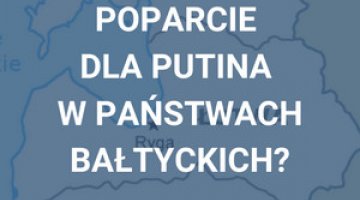The Lithuanian LNG terminal in Klaipeda is to be operational in 2014
The Lithuanian company Klaipėdos nafta (70.63% of its shares are state-owned), which is implementing the LNG terminal project in Lithuania, announced on 2 March that it had signed an agreement with Norway’s Höegh LNG covering a ten-year lease of a maritime platform for importing liquefied gas, along with regasification devices. This unit is to be supplied to the Klaipeda port between 1 September and 1 December 2014. In aggregate, Lithuania will pay the Norwegian company US$ 689 million for ten years. The unit leased by Lithuania is a Floating Storage and Regasification Unit (FSRU). Lithuania is planning to buy it out after the ten years and to use it for thirty years more. The FSRU is a central element of the Lithuanian LNG terminal. The unit, which will be moored to the quay and connected to a network of gas pipelines is to have a daily capacity at 170,000 m3 as regards storage and 11 million m3 as regards regasification, which is an equivalent of the average gas consumption in Lithuania in the winter season (2–3 billion m3 annually). The FSRU will receive gas from ordinary gas tankers to be bought under spot contracts. Last year Lithuania signed a memorandum on co-operation with the US company Cheniere Energy, which is to guarantee gas supplies to Lithuania from 2015 at a price 30% lower than the price for which gas is bought from Gazprom. The Russian company is currently the only gas supplier to Lithuania. It imposes high prices and has been unwilling so far to negotiate any discounts.
-
The construction of the Lithuanian LNG terminal is aimed at ensuring the diversification of gas supplies to Lithuania and at bringing about a reduction in gas prices owing to the possibility to import cheaper gas and the initiation of competition on the Lithuanian gas market.
-
The decision to make this investment entails a financial risk for Lithuania. This country is not applying for funds from the EU, but is considering the participation of a Western investor. The government argues that the investment is cost-efficient owing to the gas purchase agreement with the US company. For the investment to achieve the goals expected from it, it is vital that Lithuania finalises the unbundling procedure by the end of 2014 in line with the guidelines provided in the EU’s third energy package with regard to the Lithuanian gas monopoly, Lietuvos dujos (controlled by E.ON Ruhrgas and Gazprom), which owns the gas pipelines in the country. It is expected that when Gazprom loses control of the gas pipeline system in Lithuania, gas from the LNG terminal will enter the network without any problems.
-
The implementation of the LNG terminal project, along with the unbundling procedure, has offered Vilnius an advantage in its dealings with Gazprom, which embarked on talks with the Lithuanian government a few weeks ago. Although Gazprom is still making attempts to protect itself from unbundling, including by the use of international arbitration, Lithuania is in response making references to EU law and has invited a representative of the European Commission to act as a mediator. It seems very unlikely that the dispute could escalate and that Gazprom would cut supplies, especially given the fact that the route for supplying the Kaliningrad Oblast with gas runs through Lithuania.
- Lithuania’s plans to build its own LNG terminal means that it will not be a partner for Latvia in the regional LNG terminal project in Riga being promoted by Latvia. Lithuania distrusts the Latvian government, which has failed to take action to undermine Gazprom’s monopolist position in Latvia there. Since Lithuania will be able to satisfy its demand for gas using its own LNG terminal, it will also not be interested in receiving gas from the Polish LNG terminal in Świnoujście.





